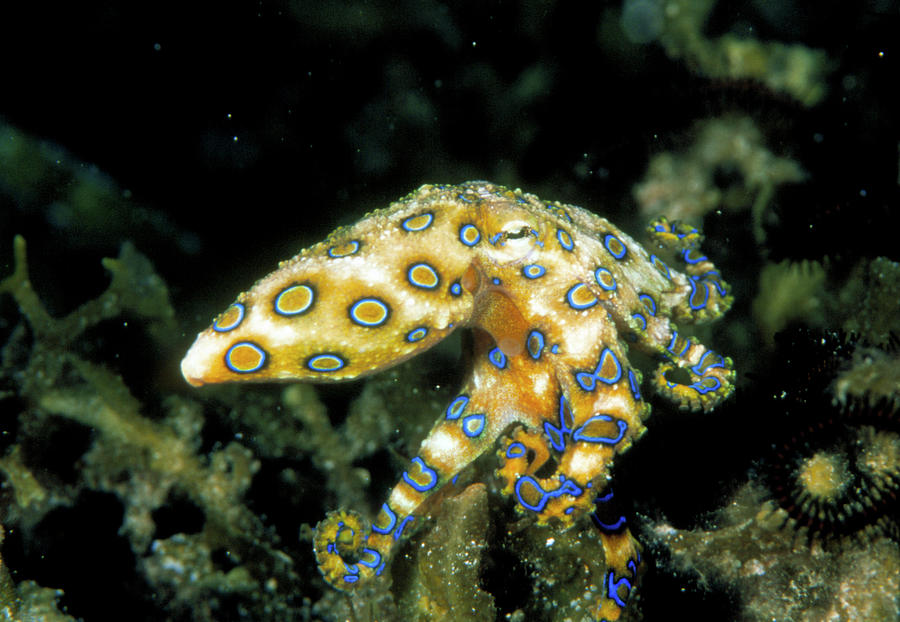
TTX is found not only in blue-rings and many fishes in the family Tetraodontidae (hence the name tetrodotoxin), but also in several other groups of animals including California newts (genus Taricha), central American harlequin frogs (genus Atelopus),as well as a scattering of invertebrates including a South American tunicate (sea squirt), a sea star, several snails, some xanthid crabs, a horseshoe crab, two ribbon worms, some arrow worms, and a flatworm. Subsequent work demonstrated that the maculotoxin is in fact TTX. Experiments with rabbits showed that a single adult blue-ringed octopus weighing just 25 g possessed enough venom to fatally paralyze 10 large humans. It was recognized to be similar to tetrodotoxin (TTX), the extremely deadly toxin found in pufferfishes. The toxin was characterized as a low molecular weight, non-protein molecule and was named maculotoxin. Ducts from each gland join to form a common duct that passes down through the brain and opens into the mouth cavity. These globular shaped glands are situated in the anterior body cavity behind the brain. In the late 1960s, the primary active toxin was extracted from the greatly enlarged posterior salivary glands of an Australian species of blue-ringed octopus, Hapalochlaena maculosa. The venom of blue-ringed octopuses is contained in their saliva.


Smaller adults and especially children are most at risk. The severity of symptoms is dose-dependent. Not all bites result in the transfer of venom. They may even appear clinically dead with pupils fixed and dilated. Some victims report being conscious, but unable to speak or move. Interestingly, the victim's heart continues to beat until extreme asphyxia sets in. In severe cases, this is followed by flaccid paralysis and respiratory failure, leading to unconsciousness and death due to cerebral anoxia. Nausea and vomiting, visual disturbances and difficulty speaking may also occur. Within five to ten minutes, the victim begins to experience parasthesias and numbness, progressive muscular weakness and difficulty breathing and swallowing. While most severe envenomations appear to involve bites, I can report developing mild local neurological symptoms after immersing my hand in sea water in which a large blue-ring had been shipped.ĭepending on how much venom has been transferred into the wound, the onset of symptoms can be quite rapid. In cases with prolonged contact, the venom might pass directly through the skin. In fact, there is some question as to whether the octopus even needs to bite to envenomate a human. This can make it difficult for emergency and medical personnel to determine the cause of a patient's distress. Often the victim doesn't even know that he had been bitten. Bites are usually reported as being painless.

The bite is slight and produces at most only a small laceration with no more than a tiny drop of blood and little or no discoloration. Typically, the victim is unaware of the danger and either picks up the innocuous looking octopus or inadvertently contacts it.

In Australia where blue-rings occur in shallow coastal waters and can be relatively common in areas frequented by beach-goers, there have been dozens of reported bites and several deaths. Throughout their range in Australia and the eastern Indo-Pacific, several humans suffer bites each year. << Cephalopod Articles | By, University of California at Berkeleyīlue-ringed octopuses are among the deadliest animals in the sea. What makes blue-rings so deadly? Blue-ringed octopus' have tetrodotoxin. What makes blue-rings so deadly? - The Cephalopod Page


 0 kommentar(er)
0 kommentar(er)
